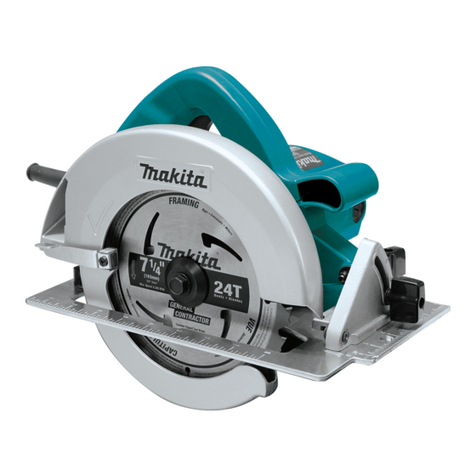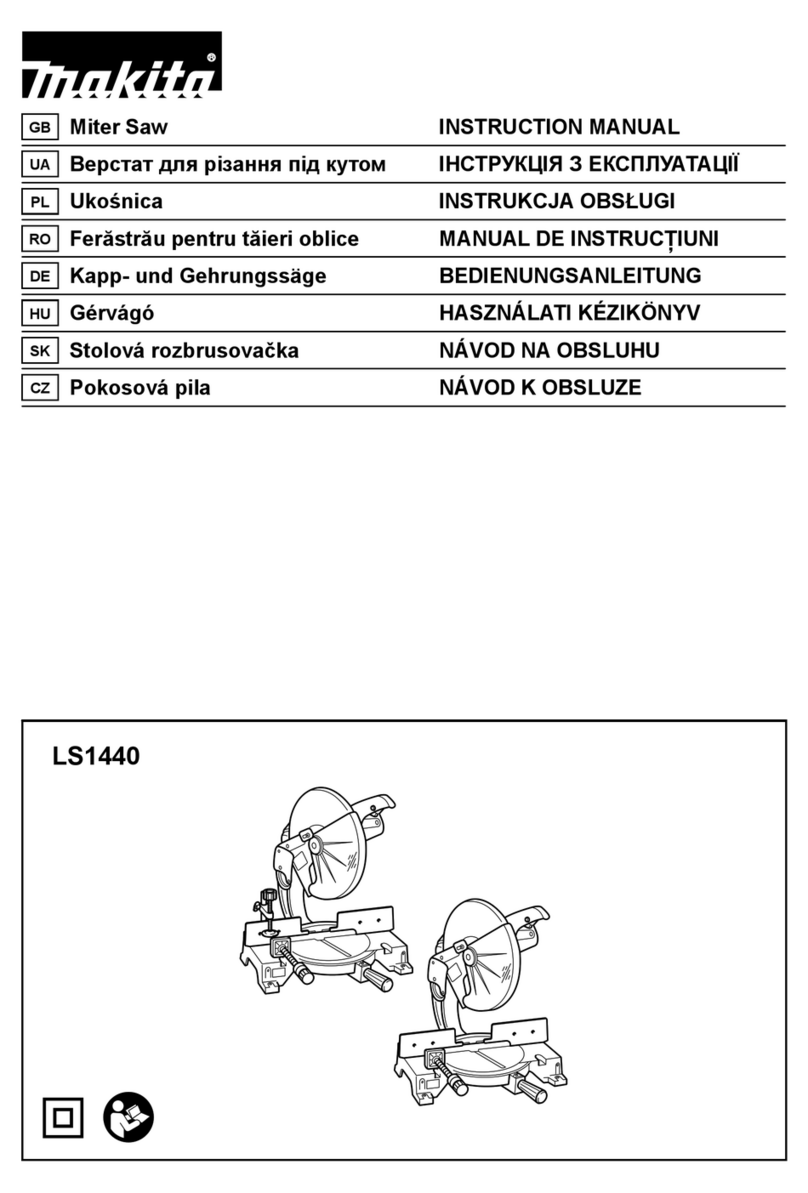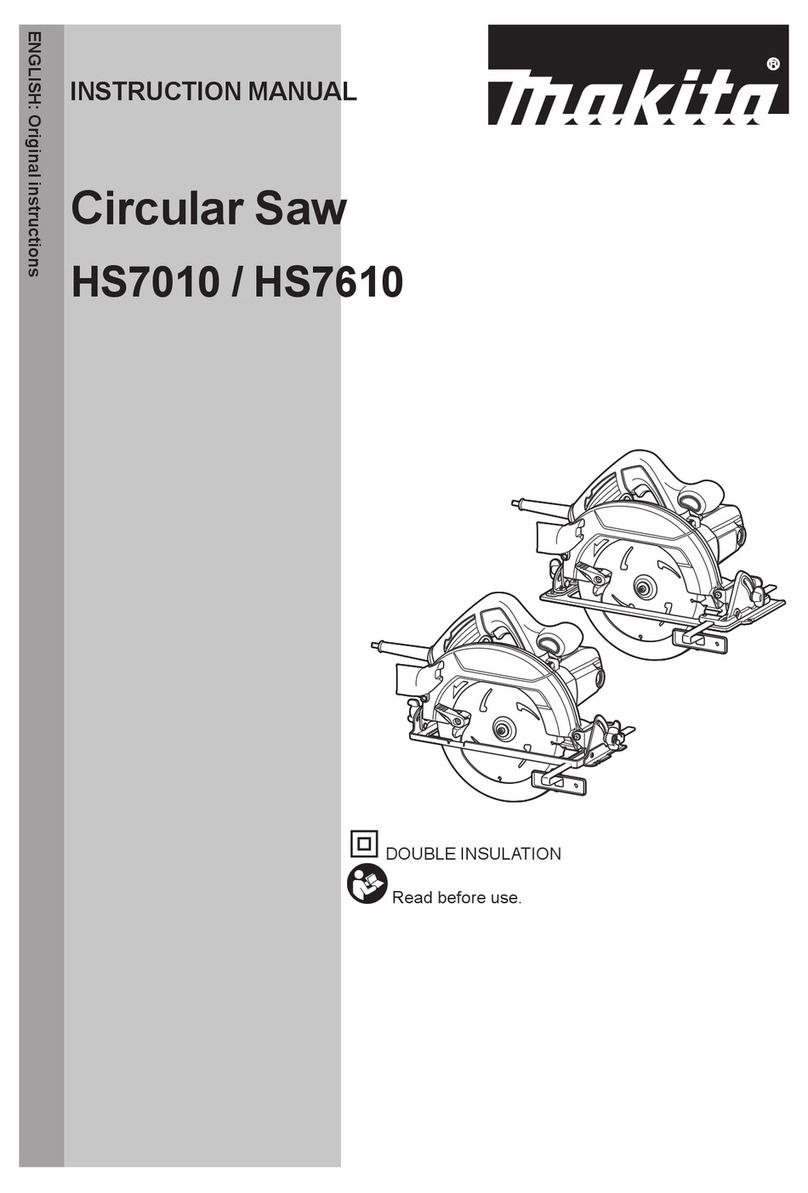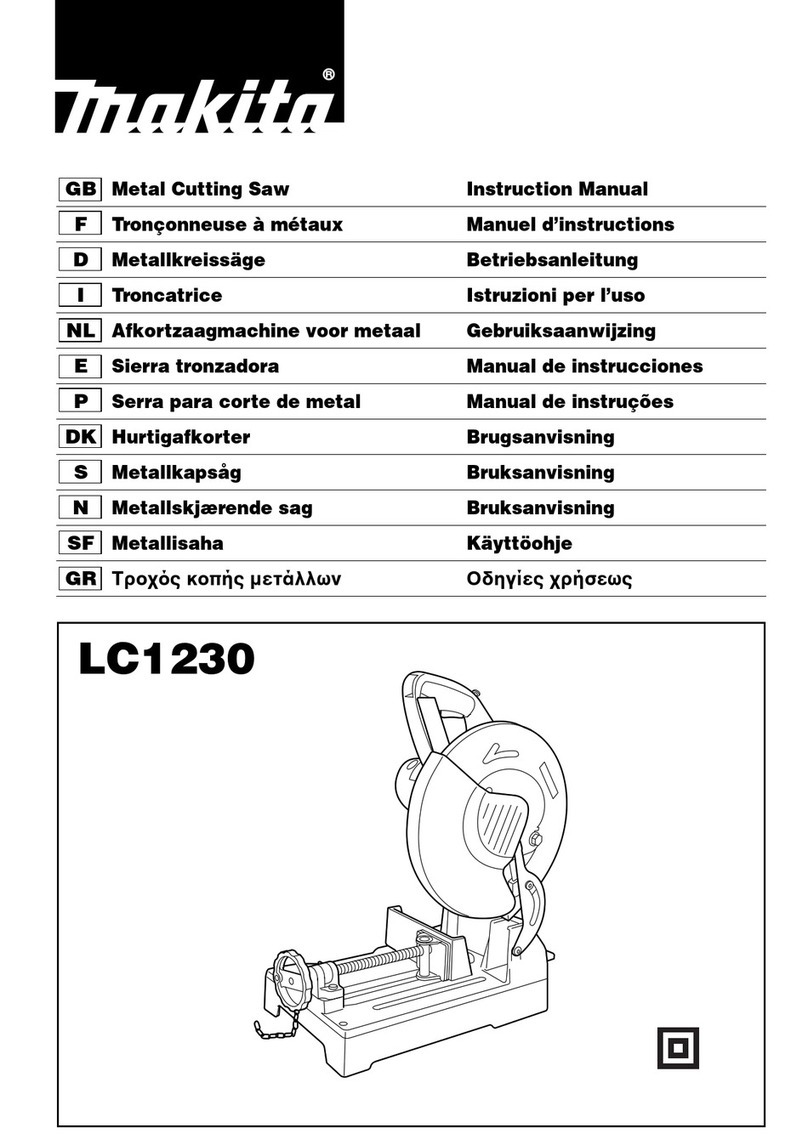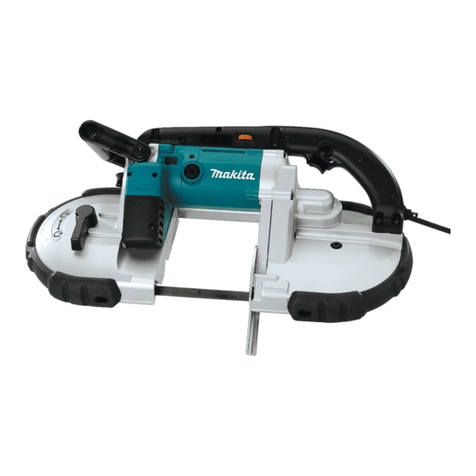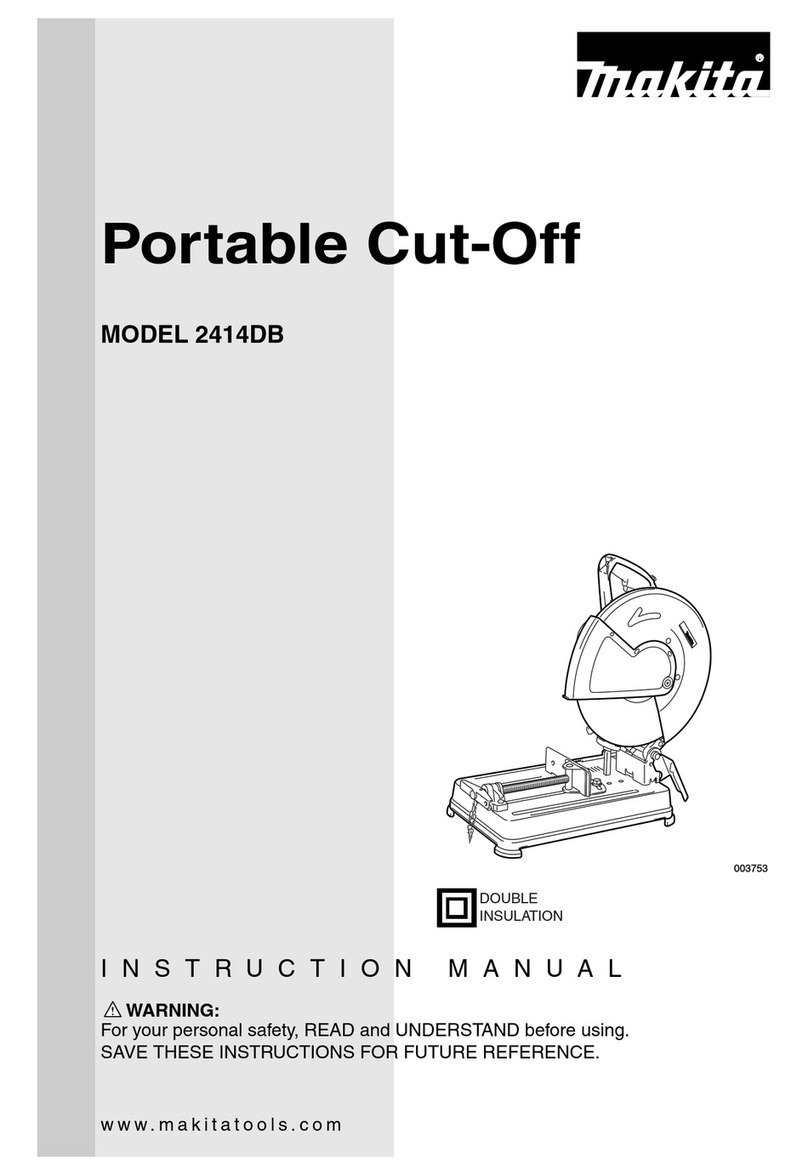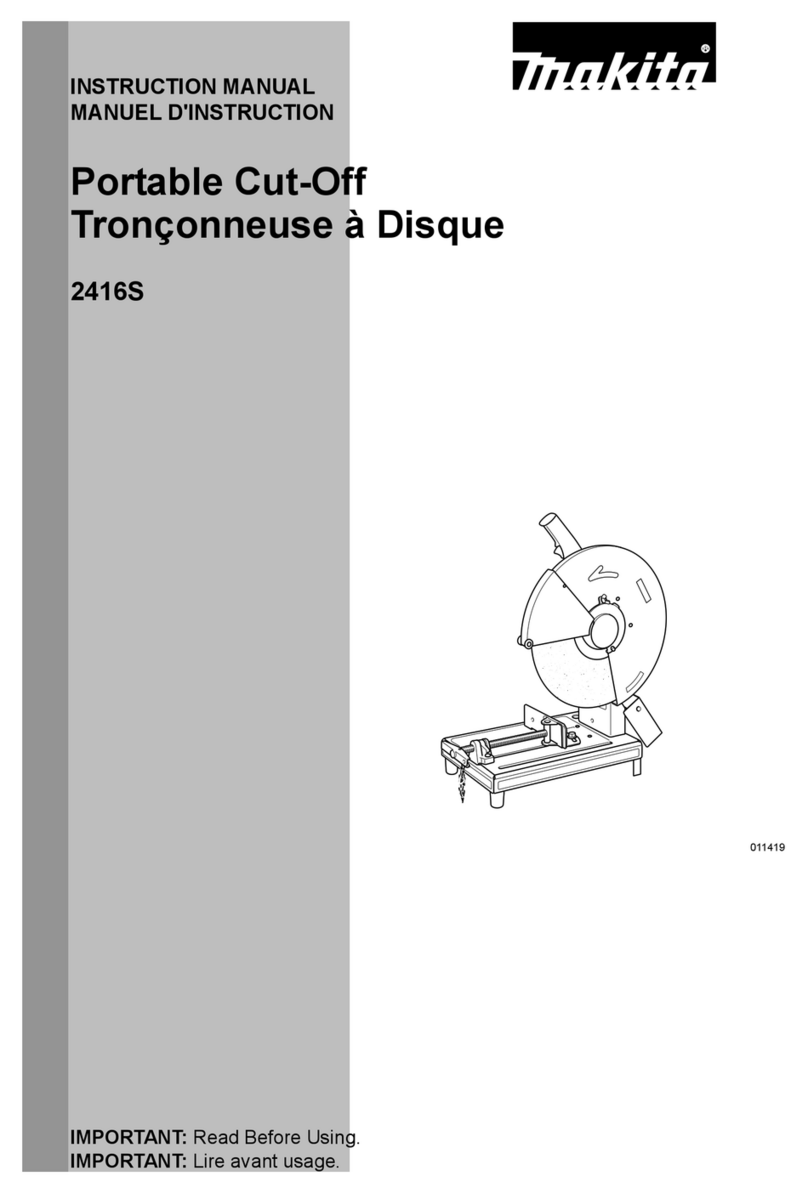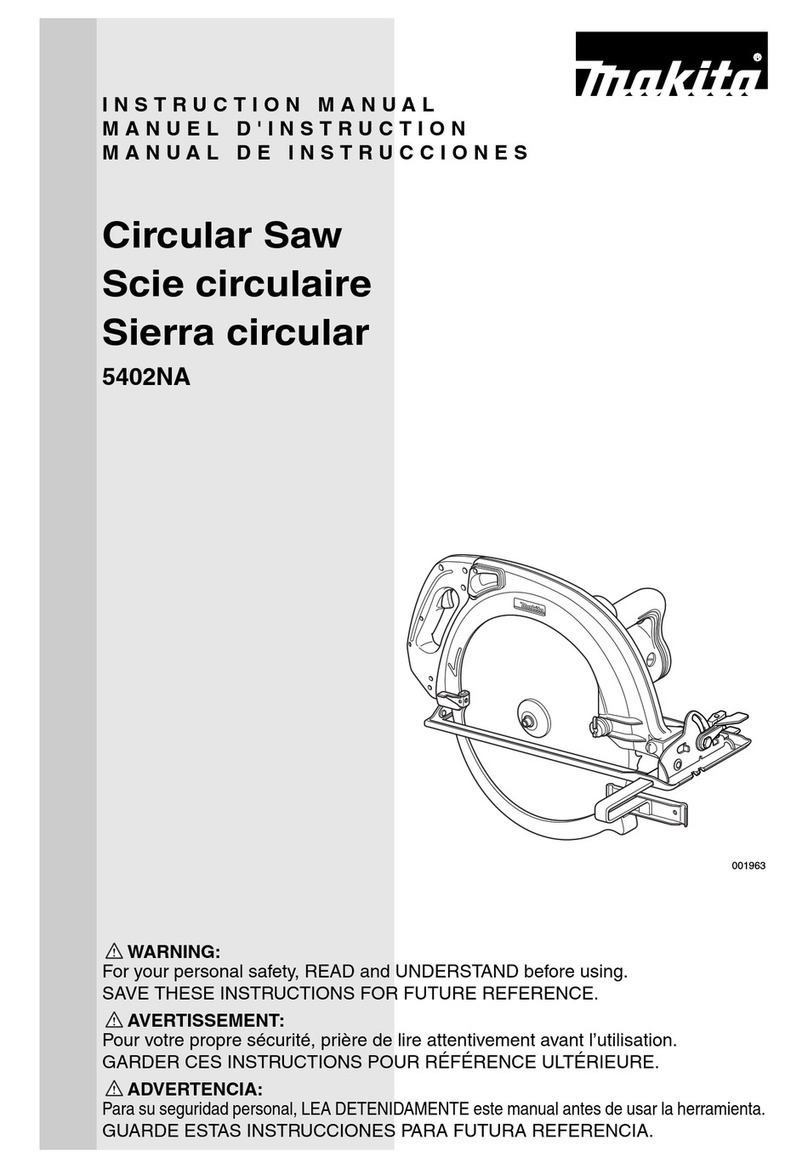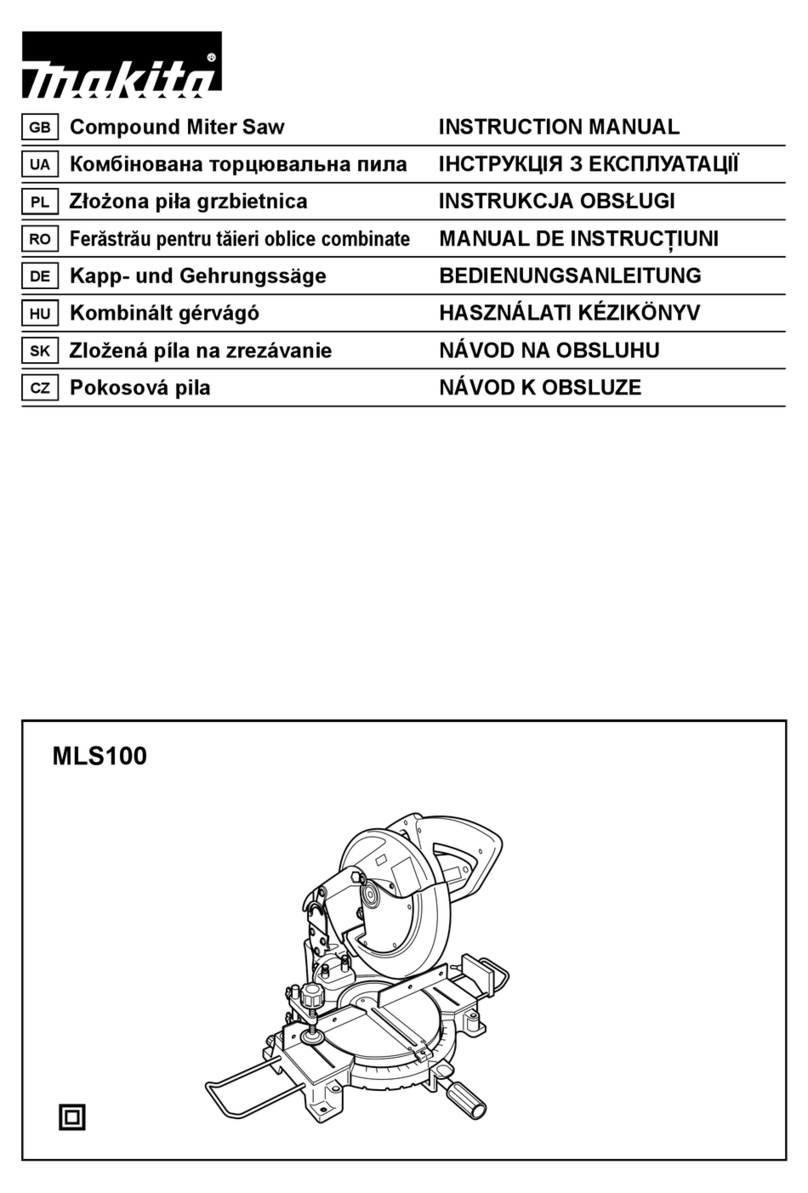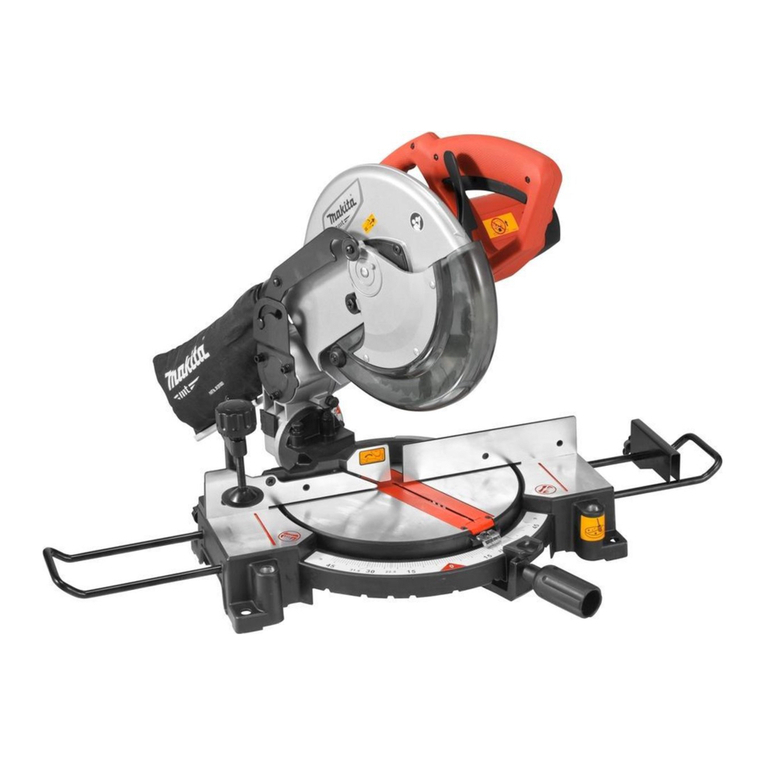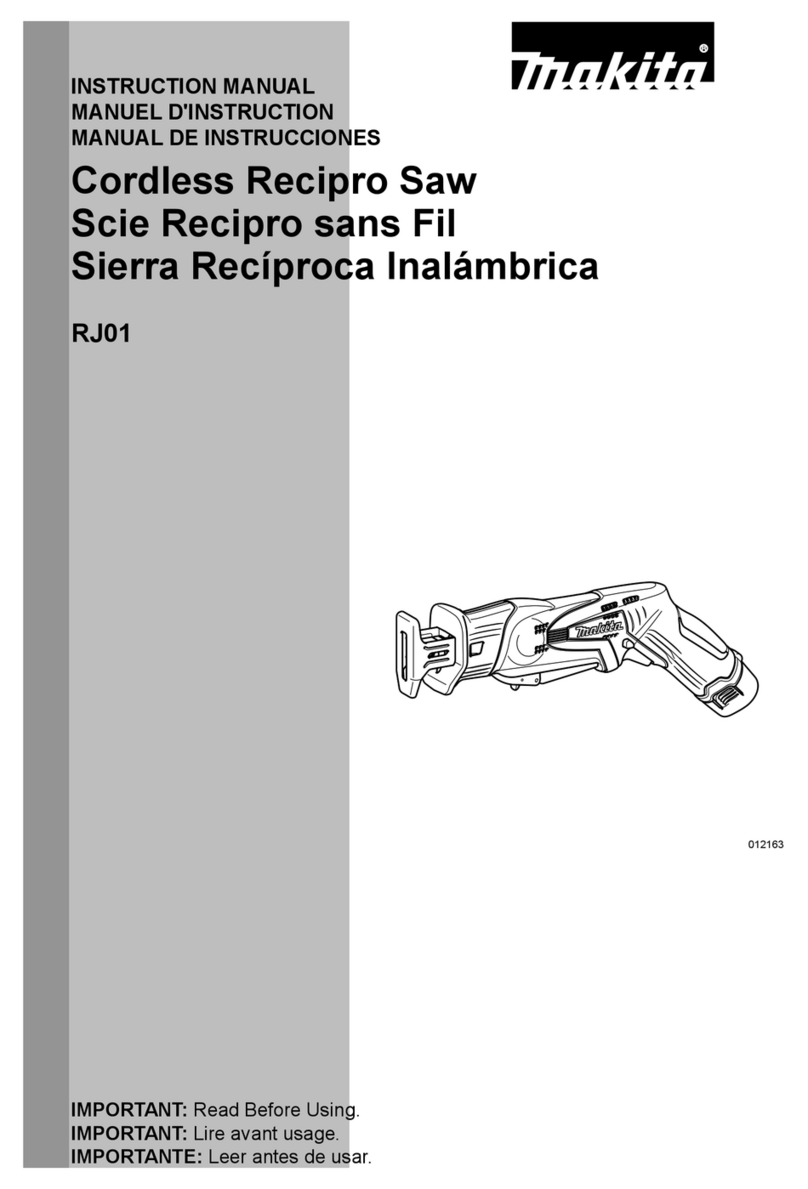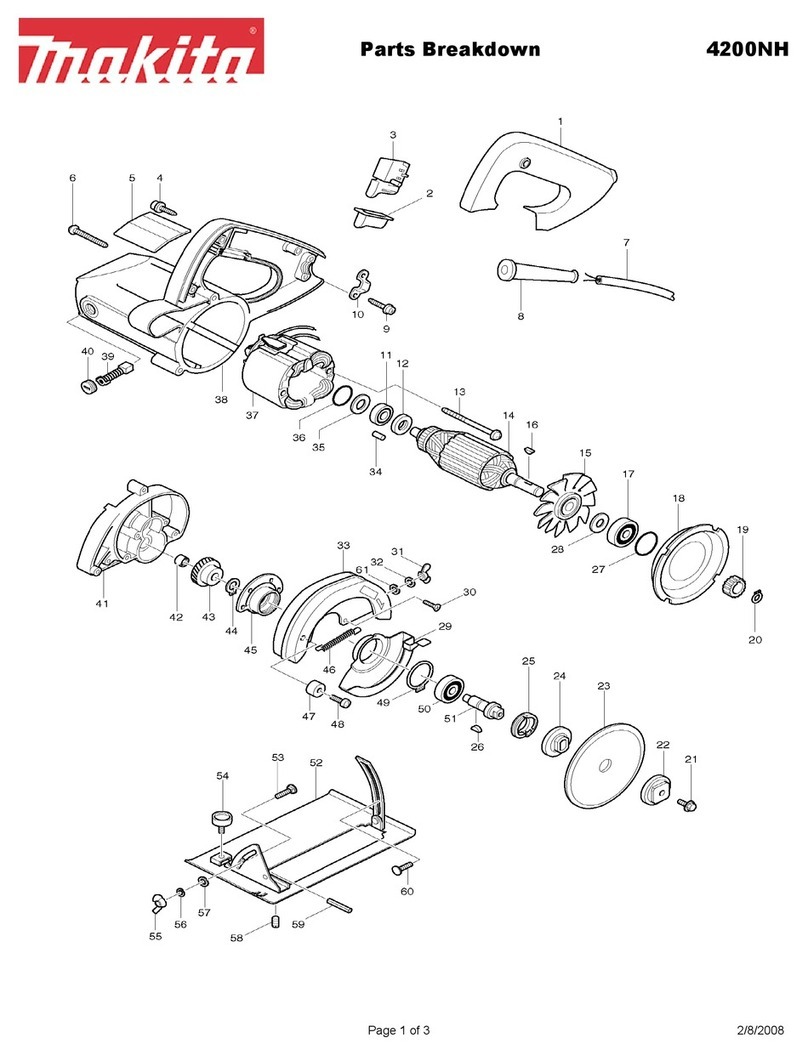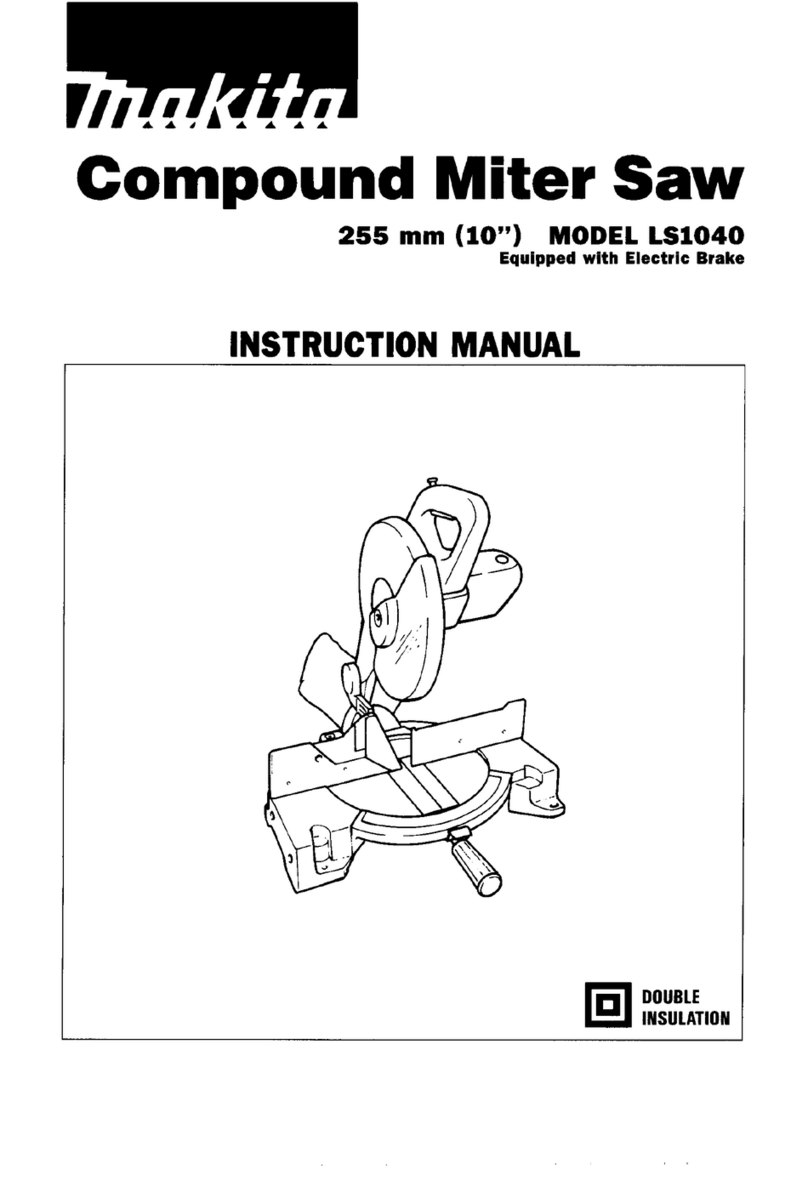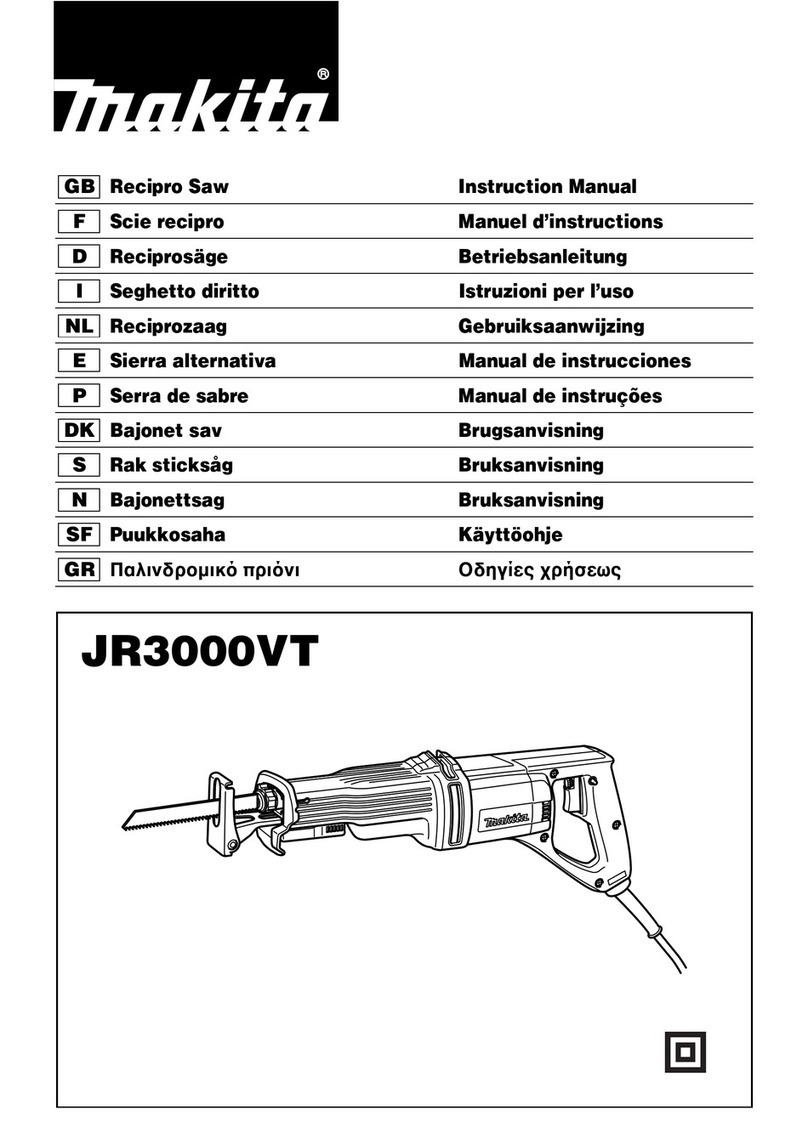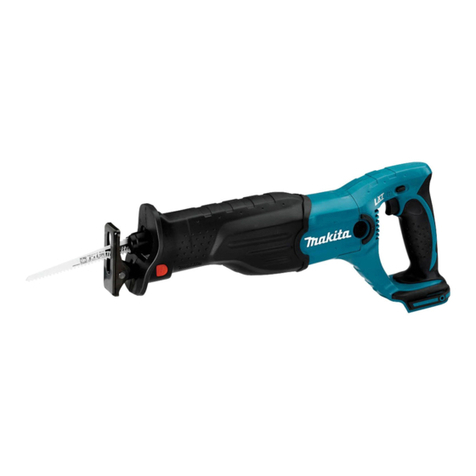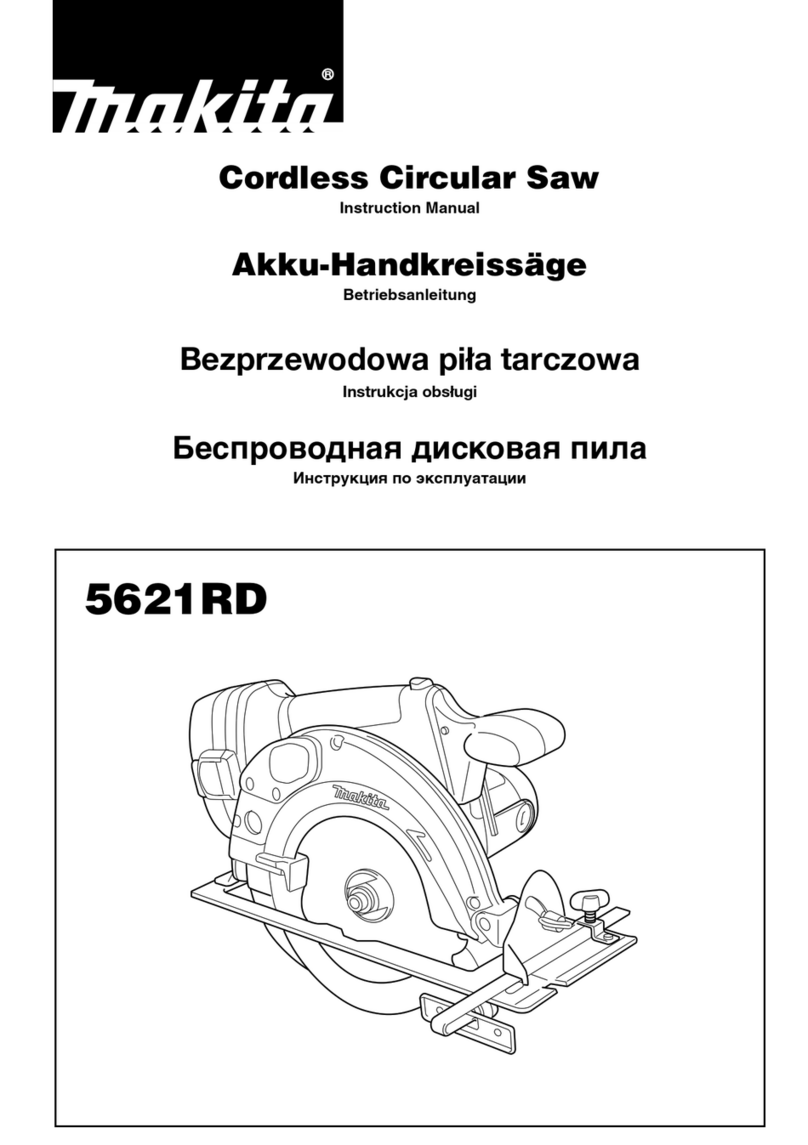
9
• Do not place hand or fingers close to the blade.
• Ne pas placer les mains ou les doigts près de la lame.
• Halten Sie Hände oder Finger vom Sägeblatt fern.
• Non avvicinare le mani o le dita alla lama.
• Kom met uw handen of vingers niet te dicht bij het zaagblad.
• No ponga la mano ni los dedos cerca del disco.
• Não coloque a sua mão ou dedos perto da lâmina.
• Hold hænder og fingre på god afstand af klingen.
• Μη βάζετε το χέρι ή τα δάκτυλα κοντά στην λάμα.
• For your safety, remove chips, small pieces, etc. from the table top before operation.
• Pour votre sécurité, retirez les copeaux et autres petites pièces présentes sur la table avant de com-
mencer le travail.
• Zur Sicherheit sollte die Tischplatte vor dem Betrieb von Spänen, Kleinteilen usw. gesäubert werden.
• Per la propria sicurezza, togliere i trucioli, frammenti, ecc., dalla superficie superiore del piano di
taglio prima di procedere.
• Verwijder voor uw eigen veiligheid zaagafval, stukjes hout e.d. van de werktafel alvorens te gaan
zagen.
• Por su propia seguridad, retire las virutas, trozos pequeños, etc., de encima de la mesa de trabajo
antes de iniciar la tarea.
• Para sua segurança, retire aparas, peças pequenas, etc., de cima da bancada antes da operação.
• Af sikkerhedsårsager skal spåner, små stykker etc. fjernes fra bordtoppen inden anvendelsen.
• Για την ασφάλειά σας, αφαιρέστε τα αποκοπίδια, μικρά κομμάτια, κλπ. απ το τραπέζι πριν
απ την λειτουργία.
• Always set SUB-FENCE to left position when performing left bevel cuts. Failure to do so may cause
serious injury to operator.
• Lorsque vous effectuez des coupes en biseau sur la gauche, placez toujours la BUTÉE PARE-
ÉCLATS ROTATIVE à gauche. Sinon, il y a risque de blessure grave.
• Stellen Sie den ZUSATZANSCHLAG bei der Durchführung von Neigungsschnitten immer auf die
linke Position. Anderenfalls kann die Bedienungsperson ernsthaft verletzt werden.
• Posizionare sempre la guida pezzo secondaria a sinistra prima di eseguire i tagli a unghia. In caso
contrario, c’è pericolo di lesioni serie all’operatore.
• Zet de HULPGELEIDER altijd in de linkse positie wanneer u linkse schuine sneden wilt zagen. Als u
dit niet doet, kan de gebruiker ernstige verwonding oplopen.
• Ponga siempre la GUÍA AUXILIAR en la posición izquierda cuando realice cortes en bisel izquierdo.
De lo contrario, podrá sufrir graves heridas.
• Coloque sempre a GUIA AUXILIAR no lado esquerdo quando executa cortes de bisel à esquerda. Se
não o fizer pode ferir o operador.
• Anbing altid hjælpeanslaget (SUB-FENCE) i venstre position, når der laves skråsnit. Forsømmelse af
dette kan bevirke, at operatøren kommer alvorligt til skade.
• Πάντοτε ρυθμίζετε το SUB-FENCE (ΥΠΟ-ΦΡΑΚΤΗ) στην αριστερή θέση ταν εκτελείτε
αριστερές λοξές κοπές. Αμέλεια να το κάνετε μπορεί να προκαλέσει σοβαρ τραυματισμ
στον χρήστη.
• To loosen the bolt, turn it clockwise.
• Pour desserrer le boulon, tournez-le vers la droite.
• Drehen Sie die Schraube zum Lösen im Uhrzeigersinn.
• Per allentare il bullone, girarlo in senso orario.
• Draai de bout rechtsom los.
• Para aflojar el perno, gírelo hacia la derecha.
• Para desapertar o perno, rode-o no sentido dos ponteiros do relógio.
• Bolten løsnes ved at den drejes i retningen med uret.
• Για να ξεσφίξετε τον κοχλία, περιστρέψτε δεξιστροφα.


